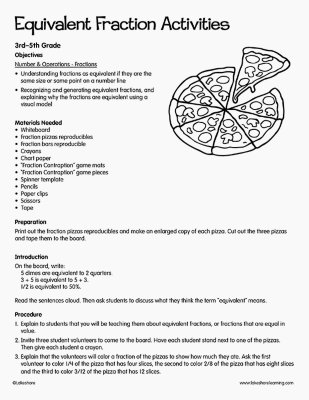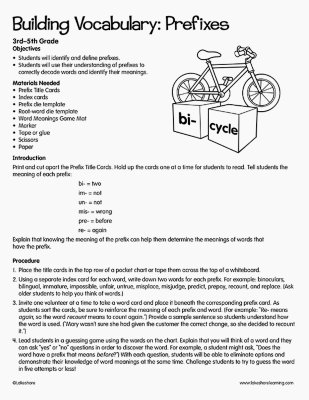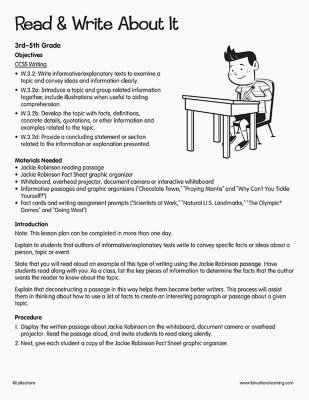Narrow by Grade
- Infant (0)
- Toddler (4)
- Preschool (0)
- Pre-K (7)
- Kindergarten (7)
- 1st (2)
- 2nd (4)
- 3rd (4)
- 4th (4)
- 5th (1)
- 6th & Up (0)
Grade 3rd
Narrow by Age
- 0-18m (0)
- 18-36m (0)
- 3 yrs. (0)
- 4 yrs. (0)
- 5 yrs. (0)
- 6 yrs. (0)
- 7 yrs. (0)
- 8 yrs. (4)
- 9 yrs. (2)
- 10 yrs. (0)
- 11 yrs. & Up (0)
Age
0 results for "cbrooms" , here are results for "games"
Filters
Clear All
Cupcake Delivery: A Rounding Game
3rd Grade
Objective
- Use place value to round whole numbers to the nearest ten or hundred.
Equivalent Fraction Activities
3rd Grade
Objectives Number & Operations - Fractions Understanding fractions as equivalent if they are the same size or same point on a number line Recognizing and generating equivalent fractions, and explaining why the fractions are equivalent using a visual model Materials Needed Whiteboard Fraction pizzas reproducibles Fraction bars reproducible Crayons Chart paper “Fraction Contraption” game mats “Fraction Contraption” game pieces Spinner template Pencils Paper clips Scissors Tape Introduction On the board, write: 5 dimes are equivalent to 2 quarters. 3 + 5 is equivalent to 5 + 3. 1/2 is equivalent to 50%. Read the sentences aloud. Then ask students to discuss what they think the term “equivalent” means.
View Lesson PlanBuilding Vocabulary: Prefixes
3rd Grade - 4th Grade
Objectives Identifying and knowing the meaning of the most common prefixes and derivational suffixes Determining the meaning of the new word formed when a known affix is added to a known word Using common, grade-appropriate Greek and Latin affixes and roots as clues to the meaning of a word Materials Needed Prefix title cards Index cards Prefix die template Root-word die template Word meanings game mat Marker Tape or glue Scissors Paper Pocket chart or whiteboard Introduction Print and cut apart the prefix title cards. Hold up the cards one at a time for students to read. Tell students the meaning of each prefix: bi- = two im- = not un- = not mis- = wrong pre- = before re- = again Explain that knowing the meaning of the prefix can help them determine the meanings of words that have the prefix.
View Lesson PlanRead & Write About It
3rd Grade - 4th Grade
Objectives CCSS Writing W.3.2: Write informative/explanatory texts to examine a topic and convey ideas and information clearly. W.3.2a: Introduce a topic and group related information together; include illustrations when useful to aiding comprehension. W.3.2b: Develop the topic with facts, definitions, concrete details, quotations, or other information and examples related to the topic. W.3.2d: Provide a concluding statement or section related to the information or explanation presented. Materials Needed Jackie Robinson reading passage Jackie Robinson Fact Sheet graphic organizer Whiteboard, overhead projector, document camera or interactive whiteboard Informative passages and graphic organizers (“Chocolate Town,” “Praying Mantis” and “Why Can’t You Tickle Yourself?”) Fact cards and writing assignment prompts (“Scientists at Work,” “Natural U.S. Landmarks,” “The Olympic® Games” and “Going West”) Introduction Note: This lesson plan can be completed in more than one day. Explain to students that authors of informative/explanatory texts write to convey specific facts or ideas about a person, topic or event. State that you will read aloud an example of this type of writing using the Jackie Robinson passage. Have students read along with you. As a class, list the key pieces of information to determine the facts that the author wants the reader to know about the topic. Explain that deconstructing a passage in this way helps them become better writers. This process will assist them in thinking about how to use a list of facts to create an interesting paragraph or passage about a given topic.
View Lesson Plan


